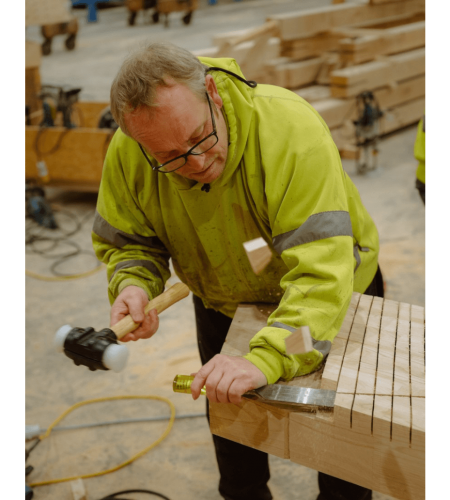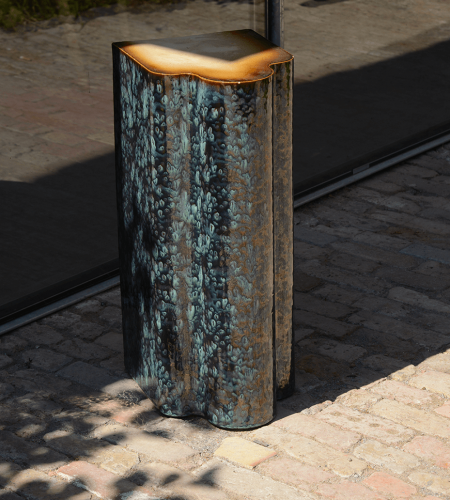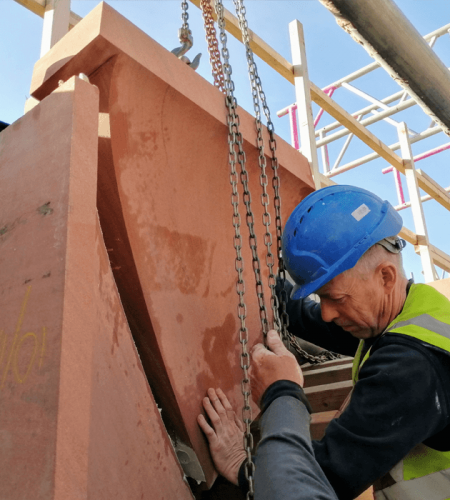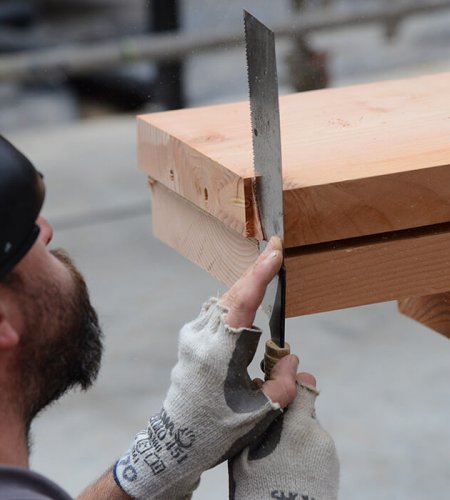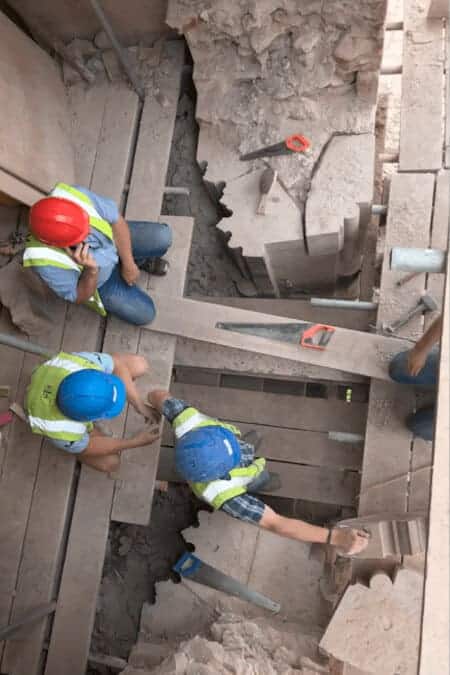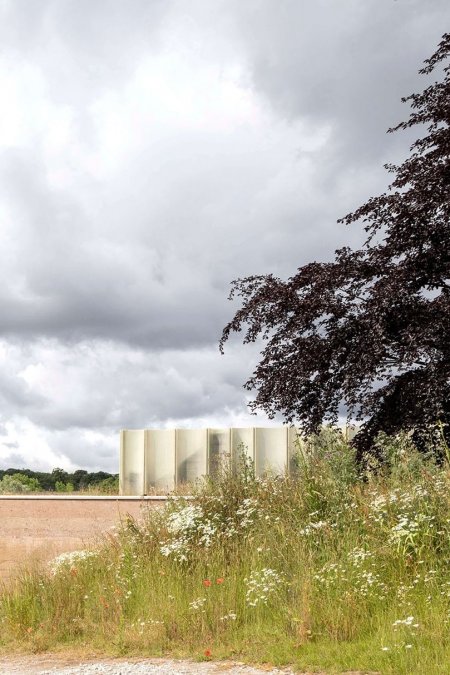Feilden Fowles is an award-winning, London-based architecture studio.
Fergus Feilden and Edmund Fowles founded the practice in 2009 following their first project, Ty Pren, a passive long-house in the Brecon Beacons. Today Feilden Fowles deliver a range of buildings across the UK, producing architecture that is rich in character and distinct in identity.
Our approach is both academic and hands-on; we enthusiastically engage in contextual research while exploring materiality and craft through large-scale prototypes and models. We investigate historic and vernacular precedents to inform our response in the present day. We are ambitious in our service to clients, striving for quality and permanence in built form.
Our buildings emerge from legible design concepts which inform the detailing and construction processes. Projects are underpinned by a strategy of longevity over short-termism, using robust yet adaptable structures and simple but beautiful materials. Our ambition is to make fine buildings with integrity that are both tectonically expressed and above all socially and environmentally responsible.
Low tech
Collectively we have come to describe our approach as low tech. We view low tech as an all-encompassing philosophy, marrying both social and environmental values with the practical and physical realities of making buildings. Sustainability underpins our design approach to each project; it profoundly affects the completed buildings we deliver; and informs our own behaviour as individuals.
We believe good design is good for our planet. We appreciate that our duty as built environment professionals requires us to positively impact our society and natural world for the better. Above all, responsible design is well planned, adequately timed, and carefully managed with a view to the long-term care of built assets and their respective custodians and user-communities.
We advocate for passive environmental design, often drawing from local traditions in construction and vernacular architecture. In addition to the selection of low embodied carbon materials, and the integration of renewable energy strategies, we harness the natural attributes of a site and optimise prevailing climatic conditions to reduce the carbon impact of projects.
Craftsmanship
Feilden Fowles designs materially rich projects, prioritising natural materials which take on a warmth, patina and weathering over time, increasing their beauty. We use traditional materials in contemporary ways, with refined detailing, particularly at interfaces and moments of expression.
We believe it is important to understand relevant vernacular precedents; why their form and materials have endured over history and how they come together. We strive to create buildings which last or are adapted, over-clad or remodelled for future needs.
Within a fast-paced and dynamic industry, we pride ourselves on our rooted approach and direct relationship to material application and construction, while capitalising on the benefits of innovation and new technologies to improve project efficiency and enhance fabric performance. We enjoy a close relationship with processes on site during construction, and believe we add most value where we undertake full project delivery to ensure quality.
Local identity
Considerations of local identity and sense of place go hand in hand with our belief in creating sustainable places. We understand that social sustainability is at the core of this, and seek to create places that are appropriately planned, well built, familiar and homely. We aspire to enable spaces that user-communities care about, which convery a strong sense of wellbeing.
Working in historic settings embeds our work within a much broader narrative which requires a deep understanding of place, culture, context and history. At Feilden Fowles we see the challenge of adapting old buildings for new uses as part of our responsibility to both the environment and to society.
Similarly, we learn from observing how vernacular buildings grow out of their response to local conditions. They are shaped by the weather, availability of materials, and the way construction methods and skills are passed down from previous generations. We are interested in these layers and fragments, old and new. The ephemeral and invisible are important too: customs, dialects, celebrations, names, spoken history, myths and symbols. All add to the rich tapestry that makes up local distinctiveness and constitute provenance. Our work aims to engender new stories for all buildings, whether they already have an established rapport, or through the creation of new structures within our rural or urban environments.

